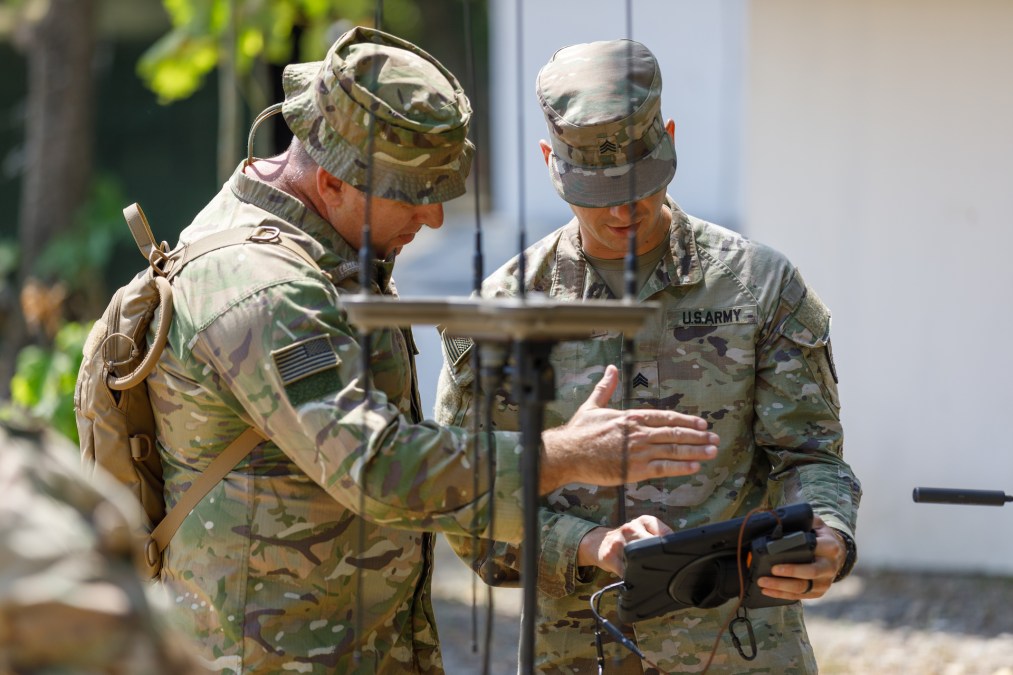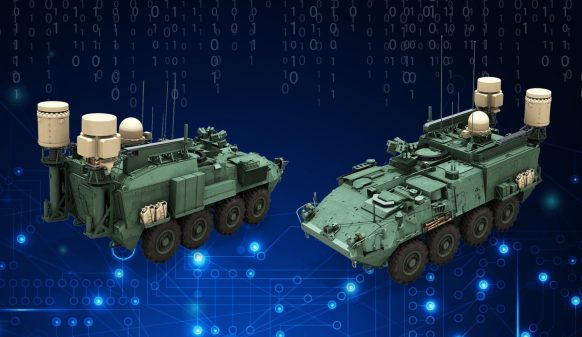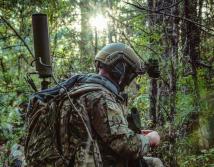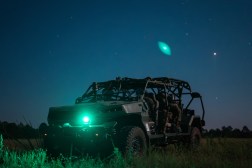Army using existing programs to run risk reduction on new starts in light of continuing resolutions

SAVANNAH, Ga. — In challenging budgetary landscapes, where Congress has kept passing continuing resolutions, meaning the military cannot initiate new programs, the Army has used existing programs to conduct risk reduction for upcoming critical electronic warfare systems.
Specifically, that effort is for the forthcoming Spectrum Situational Awareness System, or S2AS, envisioned to be a commercial off-the-shelf solution that will provide sensing and visualization of what units look like in the spectrum and allow commanders to be able to sense and report in real-time their command post signature, sources of electromagnetic interference — either from coalition partners or the enemy — and what threat emissions look like. Army officials have said this is an important capability for operations in a complex future environment where forces will have to adeptly maneuver within the invisible electromagnetic spectrum.
That program is a new start in fiscal 2025, with the Army requesting $9.3 million in research-and-development funds for integration, testing, and technical and program management support.
However, with the continuing resolution and budget impasse on Capitol Hill, development is more challenging.
Thus, the Army is using ongoing efforts associated with its Terrestrial Layer System-Echelons Above Brigade (TLS-EAB) — initially designed as an integrated EW and signals intelligence platform primarily for divisions, corps and Multi-Domain Task Forces to sense across greater distances — to run risk reduction for S2AS.
“There’s been other efforts within EAB that allowed us to understand what software capabilities are out there to get after that type of spectrum situational awareness. We’ve made those investments and I think what you’ll see is upon the [middle tier of acquisition] initiation, once the CR is lifted and the program is running, that will move really quick,” Brig. Gen. Wayne “Ed” Barker, program executive officer for intelligence, electronic warfare and sensors, said in an interview at the Army’s Technical Exchange Meeting.
“I’m thinking inside of 12 to 18 months, we could probably be at a rapid fielding for that software from an S2AS standpoint,” he added. “We’ve taken the opportunity that if we’ve had implied and specified requirements within other programs, specifically EAB, that meet the need of S2AS, we’ve used that to burn down that risk so that once S2AS was initiated, we didn’t have to spend another year, year and a half, doing the analysis to get us to that point where we can make a rapid fielding decision.”
Last year, the Army decided to spilt up the signals intelligence and electronic warfare portions of its TLS family of systems, which also include the EAB’s smaller cousin, the Brigade Combat Team system. Barker said that ultimately was the right decision for the Army to make.
The service is on track to deliver signals intelligence prototypes for both TLS systems by next spring, while platform electronic warfare from a jamming perspective is still pre-decisional and the Army is still examining what that might look like, Barker said.
The Army is taking a hard look at its entire electronic enterprise and capabilities as it seeks to potentially take on sophisticated nation-state adversaries in large-scale combat operations.
“The nature of the fundamental of everything is going on within our portfolio from an EW standpoint, is rapidly changing. The challenge within the EW portfolio is the fact that the decades of [counterinsurgency] operations, we just did not necessarily have to be in that fight to the degree to which we think we’re going to be in it today,” Barker said at the Association of Old Crows annual symposium Thursday. “We kind of had to start clean because we didn’t really have the capabilities that were needed from an EW standpoint. We’re building that up on a daily basis and trying understand what that means across the not just the materiel side of the house, but how do you train EW?”
Elsewhere within the electronic protection and management space, the Army is still figuring out what its Modular Electromagnetic Spectrum System (MEMSS) program will look like. MEMMS stemmed out of a prior science-and-technology effort called Modular Electromagnetic Spectrum Deception Suite (MEDS) and will be a new start in fiscal 2026.
“How do we confuse the enemy? It’s really about creating those types of dilemmas that impact their decision space. How are we providing our commander freedom of maneuver to do the things that they need to do, to provide them the time to either move or make decisions?” Barker said, adding his office is working across the Army to help figure that out on the requirements and materiel side.
“We got to be very conscious within this space to make sure that what we’re doing is going to impact the adversary’s targeting cycle. But we also have to be conscious of what the range of options are that we want to present to the Army,” Barker said. “It can be anything from attritable sensors that emulate all the way up to the potentially the emulate a command post. But there’s costs associated with that, and so we’re trying to be very, very conscious of that.”






